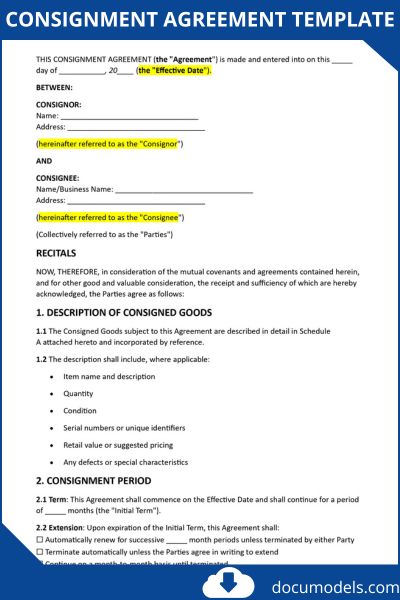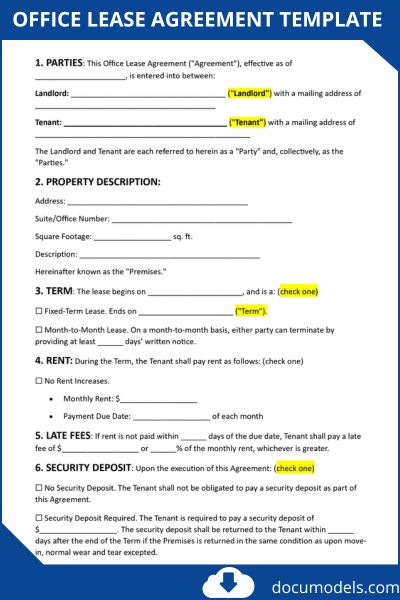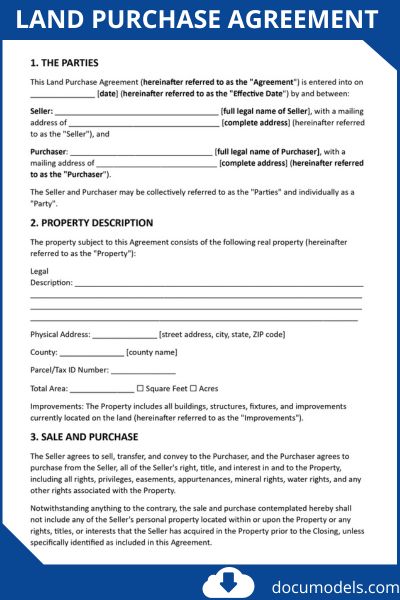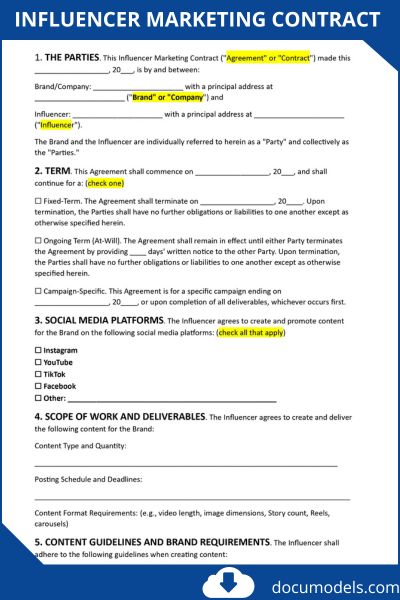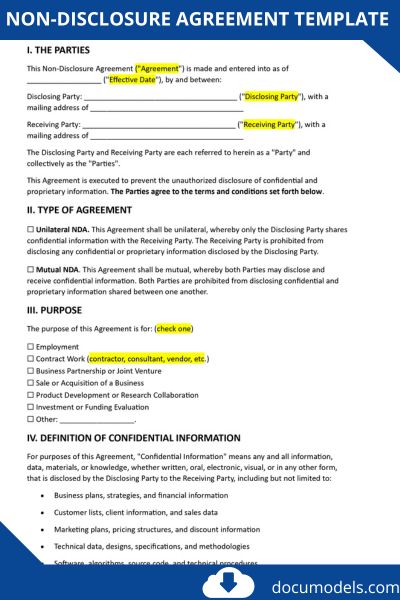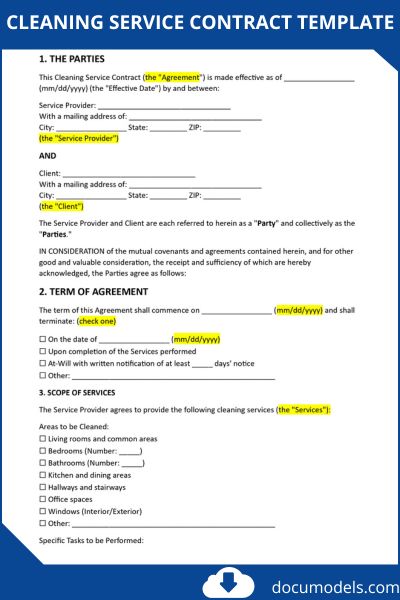When it comes to acquiring the necessary tools and machinery for your business, an equipment lease agreement can be an advantageous option.
This type of agreement allows businesses to use essential equipment without the hefty upfront investment associated with purchasing. Instead, you pay a periodic fee for the right to use the equipment, often allowing for greater flexibility and easier budget management.
Understanding the ins and outs of equipment lease agreements is crucial for making informed decisions that can benefit your business in the long term. From the terms and conditions to maintenance responsibilities and leasing periods, each agreement can be tailored to meet specific needs.
Read on as we explore sample lease agreements that highlight key points and common mistakes to avoid.

This document grants the lessee the right to use the equipment for a specific period, defined terms, and agreed-upon payments.
Equipment lease agreement (Sample)Table of Contents
What is an Equipment Lease Agreement?
An Equipment Lease Agreement is a legally binding contract between two parties—the lessor (the owner of the equipment) and the lessee (the party renting the equipment). This document outlines the terms and conditions under which the lessor allows the lessee to use the equipment for a specified period in exchange for regular payments.
Key Characteristics of an Equipment Lease Agreement:
- It allows businesses to use equipment without purchasing it outright.
- Typically used for high-value items like industrial machinery, vehicles, or office technology (e.g., copiers or computers).
- Reduces upfront costs, which can be beneficial for startups or growing businesses.
- Customizable for short-term or long-term needs.
Components of an Equipment Lease Agreement
An Equipment Lease Agreement includes several vital components. These ensure clarity between the lessor and lessee and reduce potential disputes.
Here’s a breakdown:
1. Equipment Details
This section specifies the equipment being leased. It includes:
- A detailed description (e.g., brand, model, serial number).
- The condition of the equipment before leasing.
- Any accessories or additional items provided (e.g., cables, attachments).
2. Lease Term
This defines the length of the agreement. Depending on the need, the term could be:
- Short-term for projects or events.
- Long-term for ongoing operations.
3. Payment Terms
Includes:
- The monthly, quarterly, or annual lease payment amount.
- Additional fees (e.g., delivery charges, insurance, or late payment penalties).
- Payment schedule and accepted methods of payment.
4. Responsibilities of the Lessee
Outlines what the lessee is responsible for during the lease period, such as:
- Proper use of the equipment.
- Maintenance or minor repairs (if specified).
- Returning the equipment in the agreed condition.
5. Responsibilities of the Lessor
Highlights the lessor’s duties, which may include:
- Delivering the equipment.
- Ensuring the equipment is functional at the start of the lease.
- Undertaking significant repairs (depending on the agreement terms).
6. Insurance and Liability
Addresses liability if the equipment is lost, damaged, or stolen.
It may state:
- Whether the lessee must purchase insurance.
- How compensation is handled in case of equipment damage.
7. Ownership Terms
A vital clause stating whether the lessee can purchase the equipment at the end of the lease (in lease-to-own agreements) or must return it.
8. Termination Terms
Outlines the conditions under which the agreement can end early, such as breach of contract, non-payment, or equipment misuse.
9. Default and Remedies
Explains what happens if the lessee fails to stick to the agreement.
For instance:
- The lessor may repossess the equipment.
- Additional fines or legal action could apply.
Types of Equipment Leases
There are several types of equipment leases, each catering to different business needs. Understanding these can help you find the right option.
1. Capital Lease (Finance Lease)
A capital lease allows the lessee to use equipment as though they own it. Although the lessor still technically owns the equipment during the lease period, this type of lease is often treated like a loan.
Key Features of a Capital Lease:
- Long-term lease, usually covering most of the equipment’s useful life.
- Lessee takes on risks like maintenance and obsolescence.
- Option for the lessee to purchase the equipment at the end of the lease at a residual value.
Example: A manufacturing company leases essential machinery for 10 years with plans to purchase it afterward.
2. Operating Lease
An operating lease is a short-term agreement where the lessee rents the equipment for a specific time without plans to purchase it.
Key Features of an Operating Lease:
- Shorter contract periods.
- Maintenance is often handled by the lessor.
- Equipment is returned to the lessor after the lease ends.
Example: A film production team leases high-end cameras for a three-month shoot and returns them after the project is complete.
3. Lease-to-Own (Purchase Option Lease)
Also called a $1 buyout lease, this arrangement allows the lessee to own the equipment at the end of the lease for a predetermined price, often as low as $1.
Key Features of a Lease-to-Own Agreement:
- Higher monthly payments compared to an operating lease.
- Suitable for businesses looking to eventually own the equipment.
Example: A construction company leases a fleet of trucks, intending to keep them permanently.
4. Fair Market Value (FMV) Lease
This lease allows the lessee to return the equipment at the end of the lease, continue leasing it, or purchase it at its fair market value.
Key Features of FMV Leases:
- Flexibility at the end of the lease term.
- Useful for businesses that may want equipment upgrades.
Example: An IT company upgrades its servers every five years through FMV leases.
5. TRAC Lease (Terminal Rental Adjustment Clause)
Primarily used for vehicles (trucks, trailers, etc.), this lease includes a final adjustment based on the resale value of the equipment.
Key Features of a TRAC Lease:
- Option to buy the vehicle at the end of the lease.
- Common in the transportation and logistics industry.
Equipment Lease Agreement Template
EQUIPMENT LEASE AGREEMENT
This Equipment Lease Agreement (“Agreement”) is made on this _____ day of ___________, 20, by and between:
Lessor: _____________________________, a ☐ corporation ☐ LLC ☐ partnership ☐ individual, with its principal place of business at ______________________________________________ (“Lessor”), and
Lessee: _____________________________, a ☐ corporation ☐ LLC ☐ partnership ☐ individual, with its principal place of business at ______________________________________________ (“Lessee”).
- EQUIPMENT. Lessor hereby leases to Lessee, and Lessee hereby leases from Lessor, the following equipment (the “Equipment”):
- LEASE TERM. The lease term shall commence on ___________, 20 (the “Commencement Date”) and, unless terminated earlier in accordance with the provisions of this Agreement, shall continue for _____ months until ___________, 20 (the “Termination Date”).
- LEASE PAYMENTS. a. Amount. Lessee shall pay Lessor lease payments in the amount of $__________ per ☐ month ☐ quarter ☐ year (“Lease Payments”). The first Lease Payment shall be due on the Commencement Date, and subsequent Lease Payments shall be due on the _____ day of each ☐ month ☐ quarter ☐ year during the Lease Term. b. Late Payments. If any Lease Payment is not received by Lessor within _____ days after its due date, Lessee shall pay a late charge equal to _____% of the overdue amount. c. Payment Instructions. All payments by Lessee to Lessor under this Agreement shall be made to the following account, or to such other account as Lessor may designate from time to time:
Bank: ______________________________ Account Number: ____________________ Routing Number: _____________________
- SECURITY DEPOSIT. Upon execution of this Agreement, Lessee shall deposit with Lessor the sum of $__________ as security for the performance by Lessee of the terms under this Agreement and for any damages caused by Lessee or Lessee’s agents to the Equipment during the Lease Term. Lessor shall have the right to apply such deposit to cure any default of Lessee, in which event Lessee shall promptly restore the deposit to its original amount. The security deposit shall be returned to Lessee within _____ days of the end of the Lease Term, less any offset for damages.
- DELIVERY, USE, AND OPERATION. a. Delivery. Lessor, at its own cost and expense, shall deliver the Equipment to the following location (the “Equipment Location”): ________________________________________________. b. Use. Lessee shall use the Equipment in a careful and proper manner and shall comply with and conform to all national, state, municipal, and other laws, ordinances, and regulations in any way relating to the possession, use, or maintenance of the Equipment. c. Maintenance and Repair. Lessee, at its own cost and expense, shall keep the Equipment in good repair, condition, and working order and shall furnish any and all parts, mechanisms, and devices required to keep the Equipment in good mechanical and working order. d. Alterations. Lessee shall not make any alterations, additions, or improvements to the Equipment without the prior written consent of Lessor.
- OWNERSHIP AND INSPECTION. The Equipment is, and shall at all times remain, the sole and exclusive property of Lessor, and Lessee shall have no right, title or interest therein or thereto except as expressly set forth in this Agreement. Lessor shall have the right to enter upon the premises where the Equipment is located for the purpose of inspecting the same or observing its use at any reasonable time during business hours.
- SURRENDER. Upon the expiration or earlier termination of this Agreement, Lessee shall return the Equipment to Lessor in good repair, condition, and working order, ordinary wear and tear resulting from proper use thereof alone excepted, by delivering the Equipment to Lessor at ______________________________________________.
- INSURANCE.
a. Coverage. Lessee shall, at its own expense, maintain at all times during the Lease Term insurance against loss, damage, theft, and liability with respect to the Equipment in such amounts, with such deductibles, and with such insurers as shall be satisfactory to Lessor. b. Endorsement. Each insurance policy shall name Lessor as an additional insured and loss payee and shall provide that such policy may not be canceled or altered without at least thirty (30) days prior written notice to Lessor. - INDEMNIFICATION. Lessee shall indemnify and hold Lessor harmless from and against any claim, demand, loss, damage, expense or liability (including attorney fees) arising out of or related to Lessee’s use or possession of the Equipment.
- DEFAULT. The occurrence of any of the following events shall constitute a default under this Agreement: a. The failure by Lessee to make any Lease Payment within _____ days after its due date. b. The failure by Lessee to perform or comply with any term, obligation or covenant of this Agreement. c. The subjection of any of Lessee’s property to any levy, seizure, assignment, application or sale for or by any creditor or governmental agency.
- REMEDIES. In the event of any default by Lessee, Lessor may, at its option, exercise any one or more of the following remedies: a. Declare the entire amount of rent payable hereunder immediately due and payable without notice or demand to Lessee. b. Take possession of the Equipment, wherever it may be located, without demand or notice, without any court order or other process of law. Lessee hereby waives any and all damages occasioned by such taking of possession. c. Terminate this Agreement. d. Pursue any other remedy available at law or in equity.
- GOVERNING LAW. This Agreement shall be governed by and construed in accordance with the laws of the State of _____________________.
- ENTIRE AGREEMENT. This Agreement constitutes the entire agreement between the parties and supersedes any prior understanding or representation of any kind preceding the date of this Agreement.
IN WITNESS WHEREOF, the parties hereto have executed this Agreement as of the day and year first above written.
Lessor: _________________________
By: ____________________________
Title: ___________________________
Lessee: _________________________
By: ____________________________
Title: ___________________________
Benefits of Equipment Leasing
Why do businesses opt for leasing instead of buying? Here are key benefits:
- Flexible Finances: Lower upfront costs leave more working capital for other business needs.
- Tax Benefits: Depending on your lease type, certain payments may be tax-deductible.
- Access to High-End Equipment: You can use advanced tools and machinery that might be unaffordable to buy outright.
- Reduced Obsolescence: Leased equipment can be updated or replaced more easily than owned assets.
Additional Clauses and Conditions
Subleasing and Assignment
The equipment lease agreement generally stipulates whether the lessee has the right to sublease or assign the leased equipment to another party.
This section of the agreement serves as a safeguard for the lessor, ensuring the equipment remains under the agreed terms and conditions.
- Subleasing: Most equipment rental agreements either prohibit subleasing entirely or require written consent from the lessor before the lessee can sublease the equipment.
- Assignment: An assignment clause may state that the lessee cannot assign rights or obligations under the lease to a third party without the lessor’s explicit consent.
Modifications and Upgrades
Lease agreements must address if and how the lessee can alter the equipment. These provisions ensure the equipment’s integrity and value for the lessor upon return.
- Modifications: Any changes to the equipment by the lessee usually require the lessor’s written permission, and often stipulate that the equipment must be restored to its original state at the end of the lease term.
- Upgrades: Should the lessee wish to upgrade the equipment, the agreement should specify the process for approval and who will bear the cost of such improvements.
Format model to edit
Related Articles:

